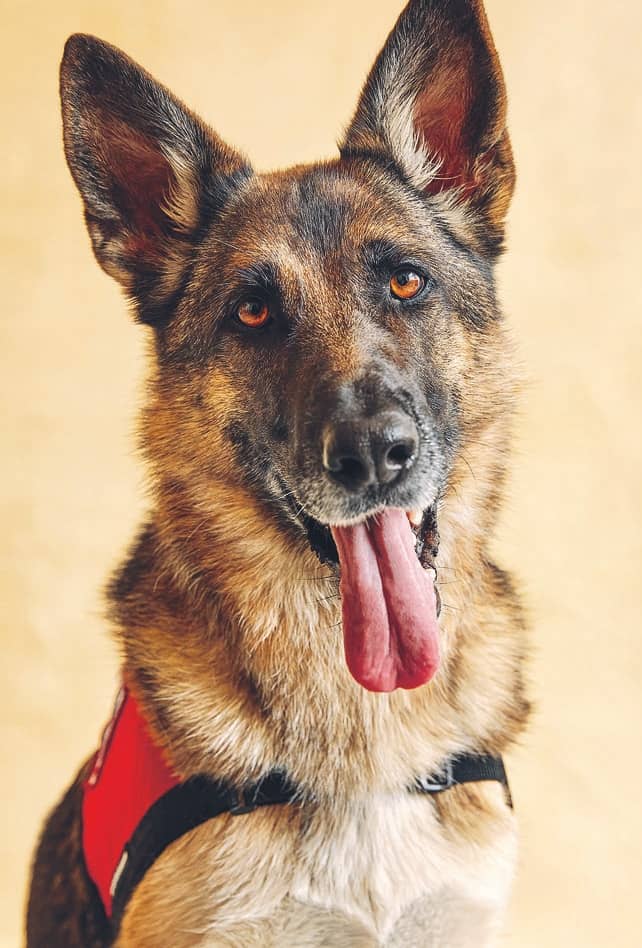Prøve GULL - Gratis
THE NOSE KNOWS
Reader's Digest Canada
|July/August 2021
How dogs’ ability to detect disease will revolutionize medicine

Osa, an athletic yet stubborn 28-kilogram German shepherd with a long fluffy tail and a fondness for red bandanas, seems an unlikely superhero. But the six-year-old pooch has mastered the art of sniffing out cancerous tumours and is key to a research project that has the potential to revolutionize oncology.
Despite the remarkable success of immunotherapy, CRISPR gene editing and other recent breakthrough treatments, oncologists’ inability to detect some cancers in their early stages remains one of the field’s most intractable—and fatal—shortcomings. Case in point: an average of 75 Canadian women are diagnosed each day with breast cancer, a disease that is treatable when found early. Yet each day, some 14 Canadians die from breast cancer.
Osa might soon help improve those odds. She is part of an ambitious effort launched five years ago at the University of Pennsylvania that aims to reverse engineer one of the most powerful scent-detection machines in the world: the canine nose. Osa is able to distinguish between blood samples taken from cancer patients and their healthy peers simply by sniffing them. In fact, she’s one of five cancer-detection dogs trained by Annemarie DeAngelo and her colleagues at the university’s Penn Vet Working Dog Center, a non-profit X-Men academy of sorts that breeds and trains “detection dogs.” The ultimate goal is to develop an “electronic sniffer” that can approximate the cancer-sniffing superpowers of Osa and her pals. Such a machine could then be deployed to thousands of doctors’ offices and medical diagnostic facilities around the United States.
Denne historien er fra July/August 2021-utgaven av Reader's Digest Canada.
Abonner på Magzter GOLD for å få tilgang til tusenvis av kuraterte premiumhistorier og over 9000 magasiner og aviser.
Allerede abonnent? Logg på
Translate
Change font size
